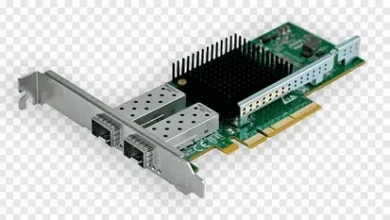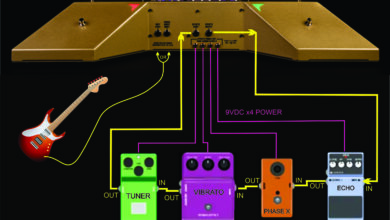What Is Board Deck Management and Why Does It Matter?
In today’s fast-paced business world, clarity and structure matter. Board meetings are where big decisions are made. But without the right tools, things can easily get lost in translation. That’s where Board deck management comes in.
It’s not just about slides. It’s about giving your board members the right content at the right time. And making sure it’s secure, accessible, and up-to-date. Let’s explore why board deck management is now essential for every organization.
Understanding Board Decks
What Is a Board Deck?
A board deck is a presentation or document used during board meetings. It summarizes the key points that board members need to review and discuss. Typically, it includes financial updates, performance metrics, and strategic plans.
It’s not just a bunch of slides. A good board deck tells a story. It helps board members make decisions quickly and confidently. And that’s why managing it well is so important.
Why Board Decks Matter
Board decks keep the boardroom aligned. They ensure that everyone is on the same page. Without them, meetings can become scattered and confusing. A clear deck guides discussion and helps avoid misunderstandings.
Also, these decks form a record. They’re often saved for future reference. So, accuracy and organization are key.
What Is Board Deck Management?
It’s More Than Storage
Board deck management is the process of creating, organizing, sharing, and archiving these presentations. It involves more than just putting slides in a folder. It’s about managing content, timelines, and access.
This process helps companies stay compliant. It also makes sure sensitive information stays secure. And in many industries, both of those things are non-negotiable.
Smart Tools Make It Easy
Many organizations now use dedicated software for this. These tools offer templates, version control, and secure sharing. They also keep everything in one place. No more emails, lost files, or last-minute edits.
This saves time. It reduces stress. And it keeps your board focused on what matters—governance and growth.
The Risks of Poor Deck Management
Missed Opportunities and Errors
If your board deck isn’t well-managed, things can go wrong. Key data might be missing. Reports could be outdated. Even small mistakes can lead to confusion or poor decisions.
Worse, if sensitive data leaks, it can harm your reputation. That’s why Board deck management is more than just a nice-to-have. It’s a must.
Lack of Transparency
Disorganized decks make it hard for board members to follow the conversation. Important topics get skipped. Time is wasted. And your leadership team might look unprepared.
Effective board deck management helps build trust. It signals professionalism and respect for your board’s time.
Why Board Deck Management Matters for Growing Companies
Scaling Up Without Chaos
As companies grow, their board meetings become more complex. More data, more decisions, and more people involved. If you’re still using spreadsheets and email threads, it won’t be enough.
You need a system that scales. Board deck management tools help your leadership team handle growth with ease. They bring order to what could otherwise be chaos.
Investor Confidence
Investors notice how you run your board. A polished, professional deck sends a strong message. It shows that your team is organized, transparent, and focused.
In contrast, a poorly managed presentation raises red flags. It suggests a lack of preparation or discipline. That’s the last thing you want when funding is on the line.
Features to Look for in Board Deck Management Tools
Version Control and Audit Trails
Board presentations evolve. There are always edits and revisions. Good management software keeps track of those changes. It ensures everyone has the latest version.
Some tools also provide audit trails. This shows who made changes and when. It adds a layer of accountability and security.
Role-Based Access
Not everyone needs to see everything. With Board deck management software, you can control access based on roles. Share sensitive details only with those who need them.
This is critical for privacy. It’s also helpful when you’re working with outside advisors or observers.
Templates and Scheduling
A good tool saves time. Templates make it easier to build consistent, branded decks. Scheduling features help you plan ahead and avoid last-minute scrambles.
Together, these features let your team focus on strategy—not formatting slides.
Integrating Deck Management Into Your Governance Workflow
Align With Your Board Calendar
Board meetings are predictable. You know when they’ll happen. So, align your deck management process with your board calendar.
Plan deadlines for creating and reviewing content. Give board members time to read before the meeting. This helps them come prepared, which makes your meetings more productive.
Work Across Teams
Creating a board deck is a team effort. Finance, marketing, HR, and legal might all contribute. With the right tool, you can streamline collaboration.
No more version chaos. No more chasing updates. Just one shared space where everyone stays aligned.
The Future of Board Deck Management
Digital-First Boards
More boards are going digital. They meet remotely. They review materials on tablets. They expect smart, digital tools—not bulky PDFs.
Board deck management software supports this shift. It makes it easy to review, annotate, and share decks in real-time.
AI and Automation
Some platforms now include automation. They might auto-fill financial data or suggest sections based on your agenda. AI can even spot gaps or suggest clarifications.
This is just the beginning. As technology improves, managing board decks will become even easier and more insightful.
Conclusion: It’s Time to Get Serious
Board meetings shape the future of your business. Don’t leave your deck to chance. Invest in a clear process and the right tools.
When done right, Board deck management can improve transparency, build trust, and help your board make smarter decisions. It’s not just a back-office task—it’s a leadership tool.




